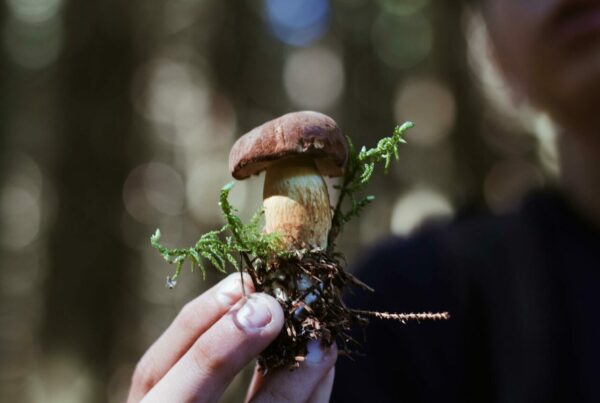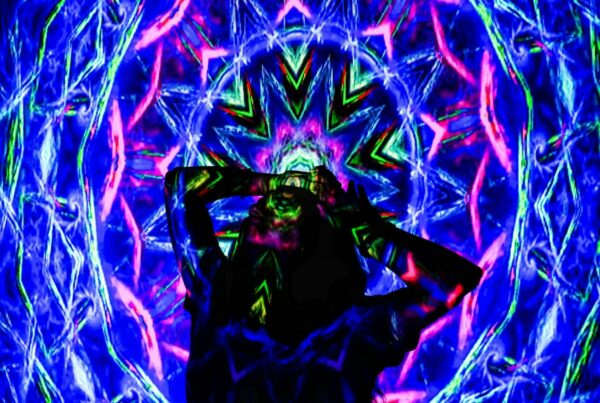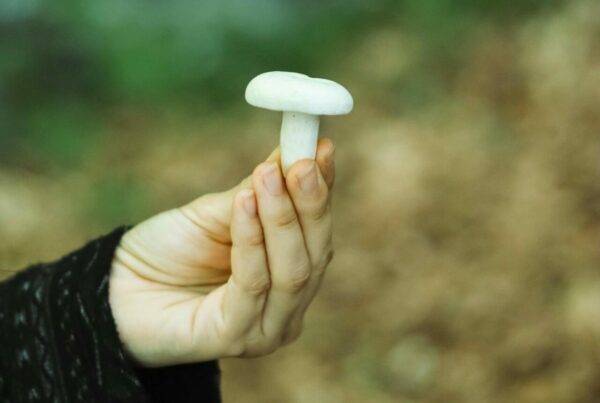Research into how psilocybin affects the human brain is ongoing, and the findings are proving to be quite remarkable. A 2023 study by Washington University found that psilocybin can reduce activity in the brain area responsible for memory and perception for a duration of over a week. This prolonged disruption might contribute to the mood-enhancing effects of the substance.
This breakthrough discovery opens up a new treatment avenue for mental health patients by providing them with a broader array of therapeutic options. The increased brain adaptability and mood-elevating effects of psilocybin could potentially provide longer-lasting relief than traditional medications. Additionally, it is economically viable to purchase it from shrooms online.
[toc]
Key Takeaways:
- Desynchronization acts as a reset button, enabling individuals with depression to form healthier, more flexible neural connections.
- It aids in combating depression, anxiety, PTSD, and addiction by fostering neuroplasticity and changing neural connections.
- Patients with depression have reported that a single dose can boost positive attitudes, mood, and behavior.
Getting to Know Magic Mushrooms
These fungi are recognized for their psychoactive components, mainly psilocybin and psilocin, which can trigger altered states of consciousness. These changes can lead to visual and auditory hallucinations, shifts in perception, and deeply emotional experiences.
For hundreds of years, they have been utilized in various cultural and spiritual traditions and are frequently referred to as “shrooms,” “mushies,” or “hongos.”
The Psychedelic Component
The most intriguing aspect of these fungi is their psychedelic component. When ingested, it converts into psilocin, which interacts with serotonin receptors (5-HT2A receptor). This interaction leads to alterations in brain connectivity and perception, resulting in the hallucinogenic effect and potential therapeutic advantages.
It disrupts regular connectivity, which leads to enhanced communication between previously unrelated brain regions, fostering new broadening perspectives and enhancing mental flexibility. This disruption, while inducing a temporary state of changed consciousness, can provoke profound realizations that may act as therapy for disorders such as depression, PTSD, and anxiety.
This substance has undergone rigorous examination in a multitude of clinical trials and has garnered recognition from Health Canada as an innovative medicinal treatment.
Recent Research on Brain Activity During and After Ingestion
A research study was conducted by the Washington University School of Medicine to examine the immediate and enduring neurobiological and psychological effects of psilocybin. The study aimed to grasp the impact of these substances on synaptic connections and the persistence of this effect.
Methodology
Psilocybin and methylphenidate were administered to healthy young adult participants on separate days. They underwent standard MRI scans (approximately 18 times) prior to, during, in between, and after each dose.
Functional MRI (fMRI) was utilized to monitor synaptic connections and activity at various intervals. This allowed for a comprehensive assessment of immediate and continuous brain network effects.
While in the scanner, participants completed a simple auditory-visual matching task. They executed this task correctly during the drug sessions.
Key Findings
- Immediate Changes: A significant disruption in connectivity across cortical and subcortical networks was observed, with changes more than tripling those observed with methylphenidate.
- Desynchronization: A marked decrease in network synchronicity, particularly in the “default mode network,” was noticed. This network, encompassing interconnected regions like the thalamus, basal ganglia, cerebellum, and hippocampus, is generally more active during self-reflection and mind-wandering than when concentrating on specific tasks.
- Task Performance: Despite the observed changes in functional connectivity, participants’ performance during the auditory-visual matching task remained steady under the active substance. This implies that the changes in functional connectivity are unlikely to be due to altered neurovascular coupling.
- Long-Term Effects: A sustained decrease in connectivity between the anterior hippocampus and DMN was noted for several weeks, but it normalized after 6 months.
- Methylphenidate results in immediate changes that are less substantial and less frequently related to brain connectivity.
Insights from Experts
Dr. Joshua Siegel, a psychiatrist at Washington University School of Medicine in St. Louis and the principal author of the study, theorizes that psilocybin promotes a more adaptable brain connectivity style.
Such enhancements in connectivity could potentially be beneficial in treating depression. By boosting the brain’s flexibility, it may pave the way for long-term cognitive changes. This desynchronization might act as a reset button for those suffering from mood disorders, fostering healthier and more dynamic connectivity.
Psilocybin’s Effect on the Brain
The active compound can skew an individual’s sense of time and space, as well as modify their sense of connection with the environment. However, these subjective experiences usually dissipate swiftly.
It impacts cells that react to serotonin, a critical chemical messenger. By briefly engaging receptors in high-density areas like the medial frontal lobe, it triggers enduring effects. This activation disrupts existing pathways and stimulates the formation of new connections.
Desynchronization decreased when participants engaged in a simple word-picture matching task, since the default mode network was dormant during this activity. This might explain why limiting external stimuli—such as using eyeshades—can augment participation in the psychedelic experience.
Lasting Impact on Brain Disruption
Although the immediate effects fade once the drug wears off, the aforementioned study found that disruptions in the connection between the DMN and the anterior hippocampus—a region associated with memory and emotion—can continue for several weeks.
This prolonged alteration could stimulate brain plasticity, potentially promoting long-term changes in cognitive and emotional processing. These sustained effects could contribute to the drug’s therapeutic potential.
Dr. Petros Petridis, a psychiatrist at NYU Langone Center for Psychedelic Medicine, observes, “Psilocybin could offer a chance for transformation, which a therapist can then assist the patient in exploring.”
Potential Advantages for Mental Health Disorders
The impact might also affect emotional processing, with alterations in the activity of brain regions involved in emotion regulation. For instance, it can affect the amygdala, a region that processes emotions, which might result in changes in emotional responses and mood.
These alterations in emotional responses could potentially and happiness, enhances creativity and promotes introspection.
- Depression: Drug sessions over two months, followed by a 14-month follow-up with moderate to high doses, can foster positive attitudes, mood, and behaviour.
- Anxiety Disorders: This approach can help mitigate anxiety, especially existential or end-of-life fears, by altering self-perception and reality. This shift can deepen understanding and acceptance of individual fears.
- Post-Traumatic Stress Disorder (PTSD): It promotes rapid and enduring reduction in emotional responses to traumatic memories by facilitating fear extinction. It may also enhance hippocampal neuroplasticity, thus improving the brain’s ability to form new connections and adapt.
- Obsessive-Compulsive Disorder (OCD): By disrupting rigid neural pathways and promoting cognitive flexibility, it can potentially decrease obsessive thoughts and compulsive behaviours.
- Substance Use Disorders: It could potentially aid in battling addiction by offering profound insights into its nature and fostering a shift in perspective.
Selecting Magic Mushrooms to Ease Depression Symptoms
Looking for mushroom products to relieve depression? This selection of Psilocybe cubensis, known for its use in spiritual and religious ceremonies, offers dependable strains.
| Dried Magic Mushrooms | Description | Effects |
| Blue Meanies | Boasts a 4 cm wide smooth top and is marked by blue bruising, hence the name. | Induces joy, hallucinations, happiness, and intense laughter |
| Golden Teacher | Famous for its spiritual or shamanistic effects, it’s a staple in the Psilocybe cubensis realm. | Produces bright colours, strong emotions, visual distortions, and feelings of lightness or giddiness |
| Albino Zilla | Bulky and thick, completely spectral white with some dark bruising. | Provokes creativity, body buzz, sociability, euphoria, and positivity |
| Atlantic Treasure Coast | Native to the Southern Florida Gulf Coast, with pale caramel-coloured caps. | Elevates mood, triggers pleasure, happiness, enhances creativity and fosters introspection |
In addition to dried psilocybin mushrooms, magic mushrooms can be taken in various forms such as edible shroom products, shroom tea, and others. Check out these readily available products for purchase:
- Wonder – Birthday Cake Chocolate Bar
- Wonder – 3000mg Cherry Cola Gummies
- Bright Future – 3000mg Dark Chocolate & Sea Salt
Safely Use Online Shrooms to Alleviate Anxiety, Depression, and PTSD
New findings have deepened our knowledge of how the active compound of Psilocybe cubensis affects the brain. A week-long disruption can cause a transitory consciousness shift. This psychedelic journey can contribute to profound understanding and provide relief for conditions such as depression, PTSD, and anxiety.
Seeking to buy shrooms online in Canada? Powerful Magic Mushrooms Canada is committed to enhancing mental health by providing top-tier magic mushrooms, a potential therapy for anxiety, depression, and PTSD. We strive to harness the extraordinary qualities of these fungi with our meticulously chosen online magic mushroom selection.
Frequently Asked Questions
Does combining Psilocybe with antidepressants amplify the effects?
At present, there is insufficient data to affirm a harmful interaction between antidepressants (SSRIs or others) and Psilocybes. The active ingredient also doesn’t escalate the risk of serotonin syndrome when consumed with a single antidepressant. Most modern clinical research involving shrooms requires participants to gradually decrease their SSRIs or exclude them from the study.
Can you microdose Psilocybe shrooms?
If you’d rather avoid the full psychedelic effects of dried shrooms, microdosing is an option to consider.
Microdosing refers to the practice of consuming a very small, sub-perceptual amount of psilocybin mushrooms, typically around one-tenth to one-twentieth of a usual recreational dose. For guidance on how to microdose magic mushrooms, adhere to the following steps:
- Procure and Process: Obtain mushrooms and pulverize them into a fine powder.
- Determine Dosage: Accurately measure between 0.1 to 0.3 grams (100-300 mg) of the dried mushrooms.
- Formulate a Dosing Schedule: Create a consistent routine, such as administering the dose every three days or following a pattern of two days on, one day off.
- Measure and Consume: Use a precision scale to ensure exact measurements and consider taking the dose on an empty stomach for maximum absorption.
- Monitor and Adjust: Keep a log of your experiences and adjust the dosage or schedule based on your personal observations.
Is it safe to buy magic mushrooms online for medicinal purposes?
Online purchases are generally safer than buying from unverified sources.
- Examine extensive details about the products, including their source and quality. Reliable vendors offer lab test results or other assurances to verify the quality and purity of their psychedelic mushrooms.
- Your payments and personal data are protected by website encryption that secures your private and financial information.
- To prevent consuming harmful varieties, only purchase from recognized sources. Review customer feedback and communicate with the provider to affirm their reliability.
Articles You May Find Engaging:





